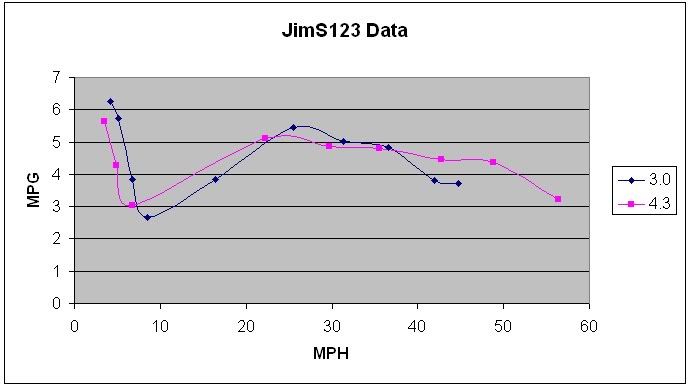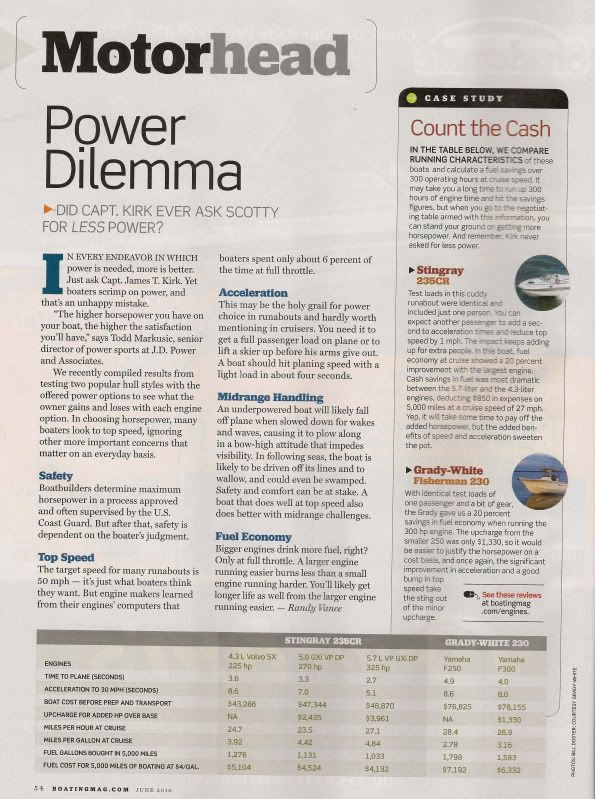Re: Chaparral 3.0 - Underpowered? HELP!
Interesting. The boat I am referring to is a Bayliner Capri. It seems to fit the criteria you mentioned. Obviously value oriented, over 40mph which for 85hp ob is pretty decent in those days. Hole shot is literally instant, on plane in the blink of an eye. Towing is respectible considering the boat and motor weigh 1050lbs. I would love to see the article from back then.
If you know of the magazine you'll remember that the publisher personally evaluated each boat and he was a former boat racer. So, "performance" was very important. They evaluated hole shot, time to plane, top speed, etc, but they also put a skiier aboard and evaluated towing performance.
Now, they had some pre-conceived idea about what the minimum speed a boat should be capaable of, so if it didn't at least go that fast it didn't make the cut. If you had to use a single word, I guess the the #1 criteria was "value". Sure, a Fountain with 800 HP has more top speed (rich guys might say perfomance)than a 190 V6, but that would not be cost effective.
Interesting. The boat I am referring to is a Bayliner Capri. It seems to fit the criteria you mentioned. Obviously value oriented, over 40mph which for 85hp ob is pretty decent in those days. Hole shot is literally instant, on plane in the blink of an eye. Towing is respectible considering the boat and motor weigh 1050lbs. I would love to see the article from back then.























